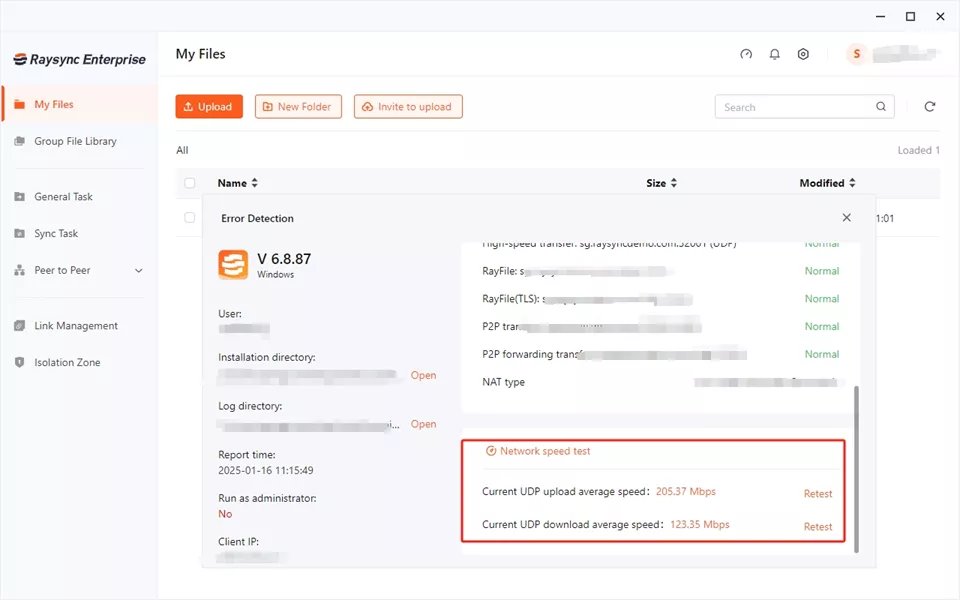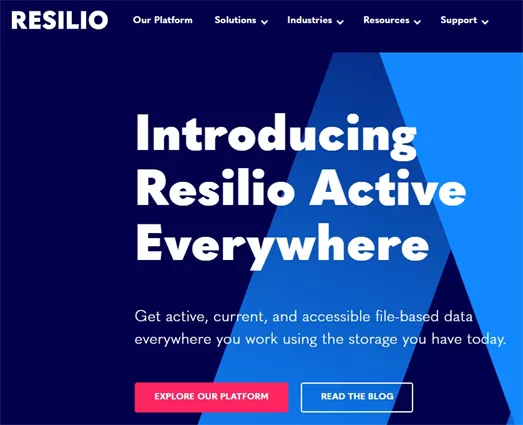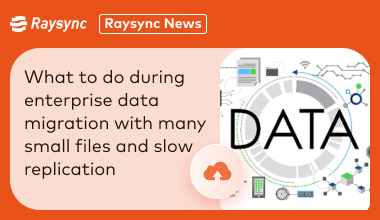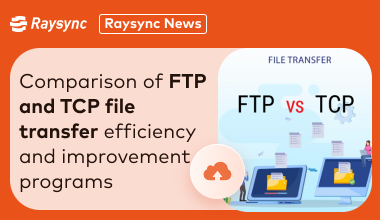High-speed DCP Transfer in 2025: You Must Know
April 9, 2024
The film industry in 2025 relies heavily on Digital Cinema Packages (DCPs) for top-notch movie experiences. These big digital files need fast and safe transfer methods. Forget slow hard drives or risky internet uploads!
This blog dives into the best high-speed DCP transfer options available right now. We'll explore what they offer, their downsides, and how much they cost. Whether you're a solo filmmaker or a big studio, knowing these solutions will help you pick the perfect way to move your precious films.
Introduction of DCP Transfer
Digital Cinema Package (DCP) transfer involves moving large sets of digital files that include a film's audio, video, and metadata components. These files ensure that movies are presented with the highest quality in theaters. Given the size and complexity of DCPs, transferring them efficiently and securely is critical.
Traditionally, DCPs were transferred using physical hard drives shipped between production houses and cinemas. While this method ensures data integrity, it is time-consuming, costly, and susceptible to damage or loss. With technological advancements, digital transfer methods have become more prevalent, offering faster and more secure alternatives.
Modern DCP transfer solutions utilize high-speed internet connections and specialized software to move large files quickly and securely. These solutions often include features like encryption, error checking, and resume capabilities to ensure that transfers are completed successfully without data corruption.
Understanding the various DCP transfer methods and their advantages is essential for anyone involved in film production and distribution. Choosing the right solution can greatly impact your workflow's efficiency and the final presentation's quality.
Top 3 High-speed DCP Transfer Solutions Recommended
When looking for DCP transfer solutions, many are known for their speed, reliability, and security. Let’s look at the three top-tier options catering to different film industry needs.
1. Raysync
Looking for a robust solution for DCP file transfers? With years of experience in the media and film industry, Raysync has established itself as a reliable choice.
Its dedicated high-speed transfer protocol is specifically designed to handle the large file sizes common in cinema, ensuring quick and dependable delivery.
Many in the industry trust Raysync for its speed, security features like encryption, and overall efficiency in managing the demanding workflows of film production and distribution.
If you need a proven solution tailored to the unique needs of the film world, Raysync is definitely worth considering.

Pros of Raysync:
- High-speed transfers with UDP-based acceleration.
- Advanced security with AES-256 encryption.
- Intelligent data compression reduces transfer times.
- Supports breakpoint resume for interrupted transfers.
- User-friendly interface with comprehensive management tools.
- Scalable solutions for businesses of all sizes.
Con:
- Some basic technical knowledge may be required for the initial setup.
Pricing Model of Raysync:
|
Raysync Cloud |
SMB |
Enterprise |
|
|
Cost |
USD $99/ Month |
USD $1,599/ Annual |
Tailored Plans |
|
Service Type |
Cloud |
On-premise |
On-premise |
|
UDP Bandwidth |
1Gbps |
1Gbps |
By license |
|
Transfer/ Download Traffic |
2 TB |
Unlimited |
Unlimited |
|
Storage |
1 TB |
Unlimited |
Unlimited |
|
Maximum User Number |
10 |
10 |
Unlimited |
2. Cinematiq
Cinematiq's DCP transfer software is designed specifically for filmmakers and post-production professionals.
It simplifies the process of formatting and transferring DCPs, ensuring compatibility with various theater systems.
The user-friendly software supports multiple operating systems, making it accessible to many users.
Pros:
- Tailored for DCP formatting and transfer.
- User-friendly interface suitable for non-technical users.
Cons:
- Limited to DCP transfers; lacks broader file transfer capabilities.
- It may not be suitable for large-scale enterprise needs.
Pricing Model of Cinematiq:
- Cinematiq offers a subscription-based pricing model. The monthly subscription is $25, with an additional one-time activation fee of $25.
3. Resillio
Resilio is a peer-to-peer file synchronization and transfer solution that handles large files across distributed networks.

Its technology ensures efficient and secure transfers, making it suitable for DCP distribution among theaters and production houses.
Resilio's decentralized approach reduces reliance on central servers, enhancing transfer speeds and reliability.
Pros:
- Efficient peer-to-peer transfer mechanism.
- Scalable solution suitable for various organizational sizes.
Cons:
- May require technical knowledge for optimal setup.
- Less specialized for DCP-specific requirements.
Pricing Model of Resilio:
- Resilio offers various pricing tiers based on the scale and user requirements. Their plans cater to both small teams and large enterprises.
What Is the Best Way to Send a DCP
Sending a DCP (Digital Cinema Package) does not have to be stressful. The best way to transfer a DCP depends on your file size, internet speed, and how fast you need it delivered.
But for 2025, high-speed, secure online transfer tools are the go-to option, especially for large cinema files.
Here is a simple way to send a DCP:
- Choose a transfer solution – Use a reliable service like Raysync that supports large file sizes and high-speed delivery.
- Compress your DCP (if needed) – Only if the platform requires it, but avoid quality loss.
- Upload the DCP – Use the service dashboard or client to start uploading.
- Enable security settings – Add passwords, set expiration dates, or enable encryption.
- Share the download link – Once uploaded, send the secure download link to the recipient.
Using tools like Raysync, your transfer will be faster, encrypted, and scalable—even if your DCP is over 100 GB. And bonus: no shipping hard drives or worrying about lost packages.
How to Estimate the Sending Time of the DCP?
Wondering how long it will take to send that huge DCP file? It depends on two things: your upload speed and the size of the DCP file.
Here is a simple way to estimate:
- Find out your upload speed – You can use speedtest.net to check it. For example, let’s say it’s 100 Mbps.
- Know your file size – Let’s assume your DCP is 100 GB.
Use this formula:
Transfer Time (in seconds) = (File Size in bits) ÷ Upload Speed in bits per second
To simplify, here’s a quick example:
- 100GB over 100 Mbps = approx. 2.25 hours
- 50GB over 50 Mbps = approx. 2.25 hours
- 200GB over 1 Gbps = approx. 30 mins
Remember that the actual time can vary due to network fluctuations or other background usage. Tools like Raysync optimize your bandwidth and can significantly reduce transfer time using multi-channel acceleration. So even if your math says 2 hours, Raysync might cut that down.
Conclusion
Moving big DCP files can feel daunting, but with the right tools, it’s easy! For fast and secure transfers, especially for important projects, Raysync is a smart pick. It’s designed for pros and makes sure your files arrive safely and on time. Skip the slow methods and go digital with Raysync!
You might also like

Raysync News
November 12, 2020Note: Sender mailbox, mailbox display logo, and company name are configured by the administrator in the admin console.

Raysync News
February 2, 2024How to migrate and transfer a large number of small files efficiently. These small files on the server, although individually small in size, are often very slow to replicate during the migration process.

Raysync News
January 18, 2024In this article, we will explore two common file transfer protocols: FTP and TCP, analyze their efficiencies, and propose how Raysync technology can improve file transfer efficiency.